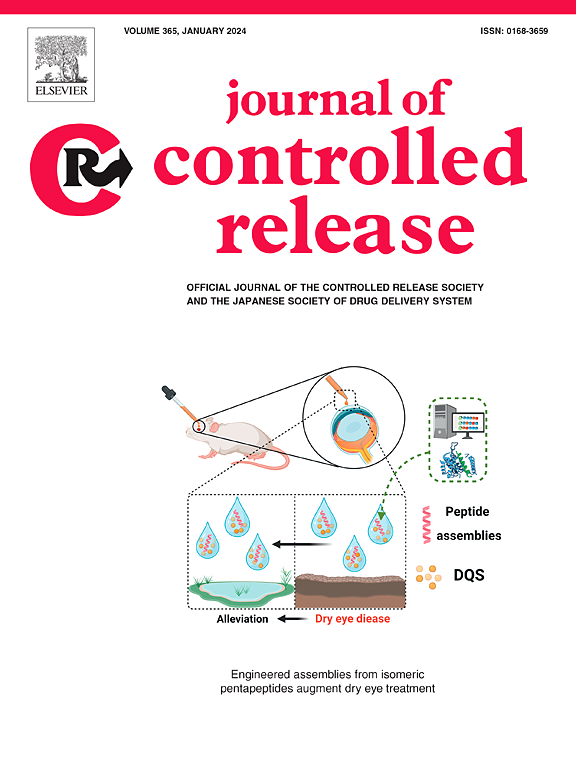Tailoring the release of highly loaded amorphous solid dispersions via additive manufacturing
IF 10.5
1区 医学
Q1 CHEMISTRY, MULTIDISCIPLINARY
引用次数: 0
Abstract
In the last decades, tremendous improvements have been made in enhancing the bioavailability of poorly soluble active pharmaceutical ingredients (APIs). Lately, their customisation potential has become a reality through filament-based 3D-printing (3DP). Highly loaded oral amorphous solid dispersions (ASDs) are of particular interest, since they drastically reduce the pill burden. However, such systems are limited by their high tendency of API recrystallisation, compromising the API solubility and the mechanical properties of filaments fabricated for 3DP. The following work closes this gap by developing compact 3DP tablets containing an ASD system of 70 % itraconazole in hydroxypropyl methylcellulose acetate succinate (HPMCAS). The processability via HME and 3DP processes was thoroughly investigated by considering filament properties such as solid-state, rheology and mechanical behaviour. Even after six months of storage, the ASD did not show recrystallisation and maintained a zero-order drug release for variable 3DP infill patterns, demonstrating the potential of this approach for on-demand processing at the point-of-care. A strong differentiation in release kinetics was found for different infills that can be used for further improvement of the product to allow tailored release rates. This work provides a strong basis for successful personalisation of highly loaded ASDs via 3DP.


求助全文
约1分钟内获得全文
求助全文
来源期刊

Journal of Controlled Release
医学-化学综合
CiteScore
18.50
自引率
5.60%
发文量
700
审稿时长
39 days
期刊介绍:
The Journal of Controlled Release (JCR) proudly serves as the Official Journal of the Controlled Release Society and the Japan Society of Drug Delivery System.
Dedicated to the broad field of delivery science and technology, JCR publishes high-quality research articles covering drug delivery systems and all facets of formulations. This includes the physicochemical and biological properties of drugs, design and characterization of dosage forms, release mechanisms, in vivo testing, and formulation research and development across pharmaceutical, diagnostic, agricultural, environmental, cosmetic, and food industries.
Priority is given to manuscripts that contribute to the fundamental understanding of principles or demonstrate the advantages of novel technologies in terms of safety and efficacy over current clinical standards. JCR strives to be a leading platform for advancements in delivery science and technology.
 求助内容:
求助内容: 应助结果提醒方式:
应助结果提醒方式:


